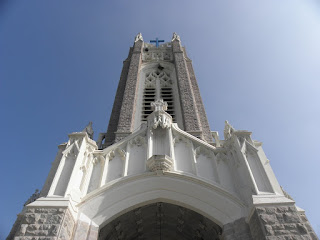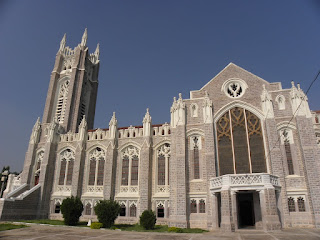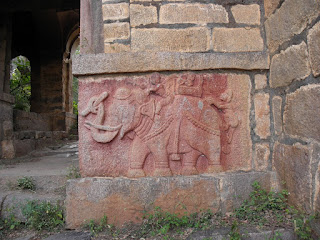The town of Medak, is one of those places in Andhra Pradesh, which has tremendous historical importance. Being a buzzing center during the reign of Kakatiyas, today’s Medak town awaits its turn to reap the fruits of many of the technological advances that has been achieved. Barely 100 kms from Hyderabad, Medak offers us following options for spending a wonderful holiday.
Coming to the team for the journey, following are the bullets:-
· Vijay was very anxious at the start of the trail. The way he was walking towards us at Mangatrai (our meeting point) made it obvious that he had 100 questions regarding the days he going to pass with us. Vijay, I must tell you again that the Dosas, Chutney, Chicken, Sweet Potatoes, Chocolates, Fruits all were simply too good with a very special note for Dosas and Chicken.
· Prasad’s tremendous knowledge about many fields was good discussion during the car journey. The way that he convinced the forest official to keep his car’s AC on during the Pocharam WLS drive was amazing. The old man just adhered to what Prasad said. On a lighter note after the entire tour, dude! You must atleast now admit that the grunting and the growling leopard on the Nizam’s terrace was ‘the vibration in your respiratory structure’ and not poor me!! Loved your driving. Any time you want company for long drives... Count me in!! Lucky you, spotted the Scorpion in the dark.
· Rashmi, thanks for making all attempts to ruin all the group photos. Poor Vijay and me too. Every time we tried to take group photos she would be the one lost somewhere else… Piscean affinity with water was proved this time again when you were not at all ready to come into the boats and came swimming to the GHAC Island. (I liked this name)
· Mel – our TREK LEADER, what a champion swimmer, trekker, singer and guitarist you are. By the way did you like the names given to by Prajakta – Mel** ,… , ... If not then please tell her about it. On our next trek she would get you some more names.
· Prajakta and Me – Well for the entire trek, I was busy taking her photographs and she looking at my camera lens. So nothing much about us. Towards the end - Prajakta – the team would glad if we can have that Extra Salted Potato Veggie and the Kadai Chai again!!!
Fact File:- Distances:- Medak is approximately 120 km from Hyderabad. Food and Stay:- For this entire tour Medak town is the central place from where you can pick your food and water. Hotels near the bus stop offer excellent South Indian food. There are lodges available near the police station of Medak. |









































